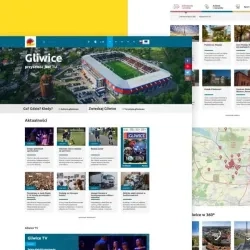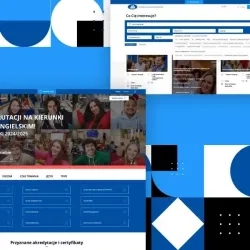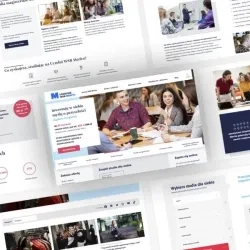What is WCAG?
WCAG (Web Content Accessibility Guidelines) is a set of accessibility standards for websites established by WAI (Web Accessibility Initiative). The main goal of the WCAG guidelines is to make websites as easy to use as possible for people with disabilities. The latest WCAG standards, version 2.2, have been in force since October 2023.
WCAG 2.2 Compliant Website
A WCAG 2.2-compliant website provides access to its content to all Internet users, on any device, no matter the conditions. In the case of WCAG non-compliant websites, many users with disabilities could have a lot of difficulties with the proper reception of content or even usage of the platform.
To be fully WCAG compliant, the website has to meet all the WCAG guidelines. However, this may be unenforceable for many businesses or institutions.
As a result, the three-level conformance system was implemented.
- A – lowest level
- AA – medium level
- AAA – the highest level

Our Experience in WCAG Implementation
Our team specializes in creating WCAG-compliant websites from scratch as well as WCAG implementation on existing websites. In previous years, we developed brand-new websites for The Polish Committee of Standardization, Gliwice City, Merito WSB University and Leon Koźmiński Academy. All our solutions designed for public institutions meet WCAG guidelines. Thanks to the experience built on numerous projects, our developers can adjust any website to dozens of WCAG guidelines.
WCAG 2.2 Guidelines - What Rules Do They Cover?
Why Should You Adjust the Website to WCAG 2.1 or 2.2 Guidelines?
- Reach – access to a wider range of customers.
- User-friendliness – website available for all users without exceptions.
- Accessibility – no usage limits for people with disabilities.
- Image – building a positive image as a business/institution that recognizes the needs of people with disabilities.
Whose Websites are Obliged to be WCAG 2.1-Compliant?
According to the European Union Directive from April 2019, websites of all public institutions e.g. government administration bodies, have to be compliant with WCAG 2.1 at the minimum AA level. Despite this fact, having a website that meets WCAG guidelines should be the priority of any business that wants to broaden the customer group.
How Can You Adjust the Website to WCAG 2.1 or 2.2 Guidelines?
Making the website WCAG compliant even at the minimum level requires the professional skills of IT specialists. They will implement all the necessary improvements to make the website legal and functional.
Adjustment of either new or already existing websites to WCAG guidelines is a task for a well-skilled developer who can adapt the website to tens of WCAG requirements simultaneously.

What Do Our Customers Say About Us?
Let’s make your website available for all users




